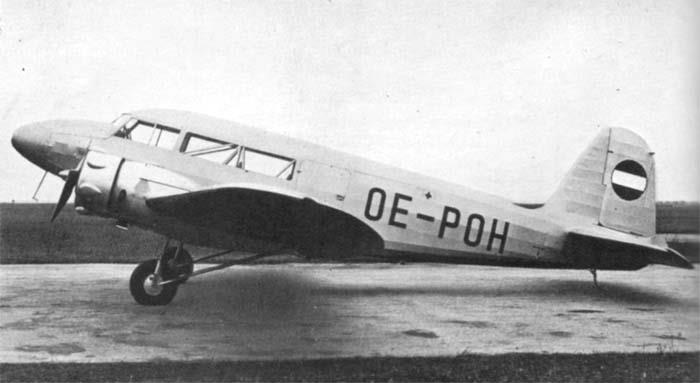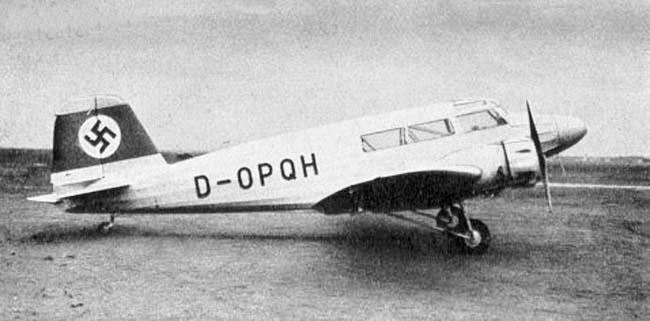In 1935, the leadership of the Austrian company Hirtenberger Patronen, Zundhutchen und Metallwarenfabrik AG decided to expand its own production of aircraft structures and aircraft manufacturering and bought Flugzeugbau Hopfner GmbH. The first plane adopted for series production was a small twin-engine monoplane, intended for the carriage of passengers or cargo transportation . The design of the new machine Hopfner / Hirtenberg HV.15 based on the elements of the previous airplane Hopfner HR.14/34, developed by engineer Lampihom in 1934, from the firm Flugzeugbau Hopfner GmbH. It was a monoplane with a glazed cabin and retractable landing gear. The wing had a wooden structure, and the fuselage was assembled from steel pipes and fabric..
The prototype HV-15 (OE-POH) made its first flight March 8, 1936. The aircraft was equipped with two Siemens Sh-14a (160 hp). Production machines were to have the British de Havilland "Gipsy Six" II (204 hp), but also with German engines HV.15 showed good performance. The prototype was then given to the Austrian police.
Austrian designers planned a production of military modified NM.15 equipped with French engines Renault "Bengali Six", navigation equipment and defensive armament consisted of 2-3 movable machine guns placed in the fuselage. Provided for the suspension of small bombs weighing up to 300 kg. The main purpose of NM.15 been training pilots and navigators (including for night flying), as well as an option for use as a light bomber.
Series production aircraft of HV.15 and NM.15 never took place. After the annexation of Austria, its aviation industry has undergone restructuring, which resulted in the abandoning of the obsolete aircraft found, and the company Hirtenberg became part of the new company Wiener-Neustadter Flugzeugwerke GmbH (Abbreviated - WNF). Under the new system of notation HV.15 renamed WN-15 (sometimes called WNF 15) and was given the German registration code D-OPQH. After three years in Austria Wn.15 plane was donated in 1942/1943 to the Croatian Air Force. and was used for some time for transportation purposes, registration 2101.
| Type |
2 + 4 seat passenger plane |
| Engine |
2 Siemens Sh 14A |
| Dimensions |
Length 10,65 m, height 2,90 m, span 15,00 m, wing area 33,00 m2 |
| Weights |
Empty 1550 kg, flying weight 2200 kg |
| Performance |
Max. speed 235 km/h, cruising speed 198 km/h, range 900 km, service ceiling 4200 m |
| Type |
Werk.Nr |
Registration |
History |
|
|
OE-POH, D-OPQH, 2101 |
|


